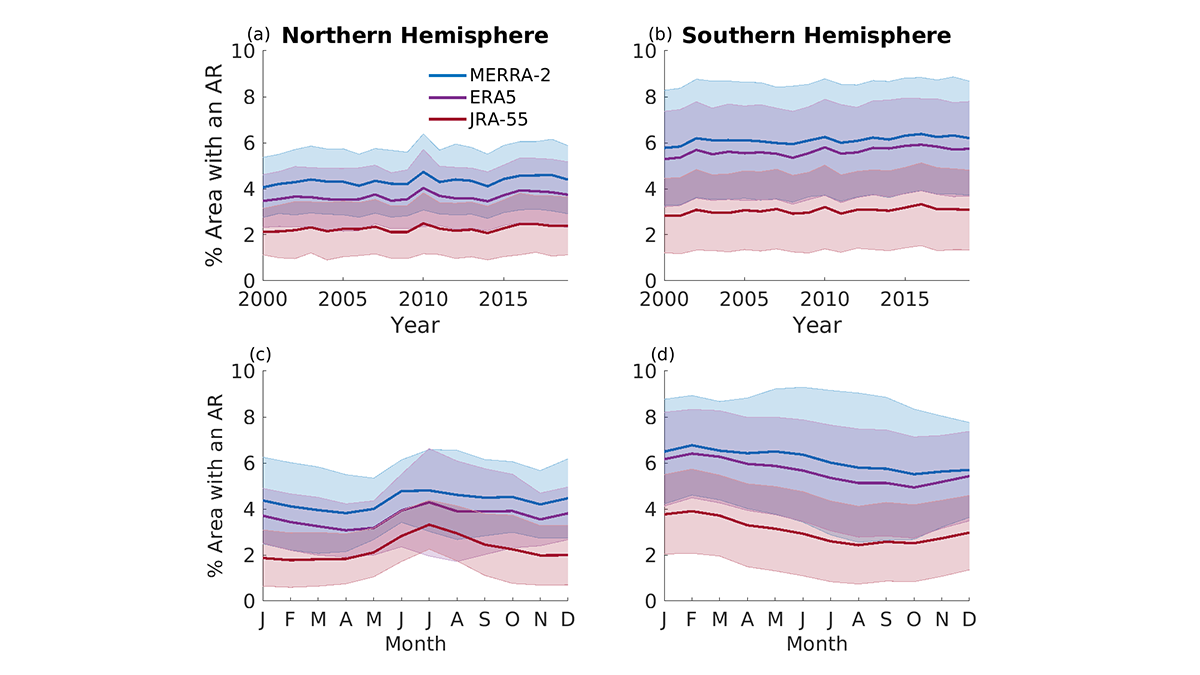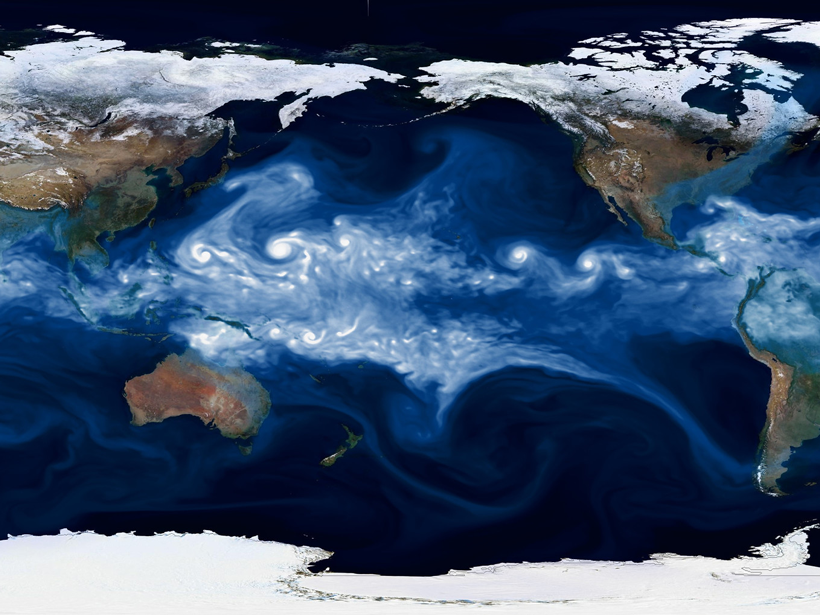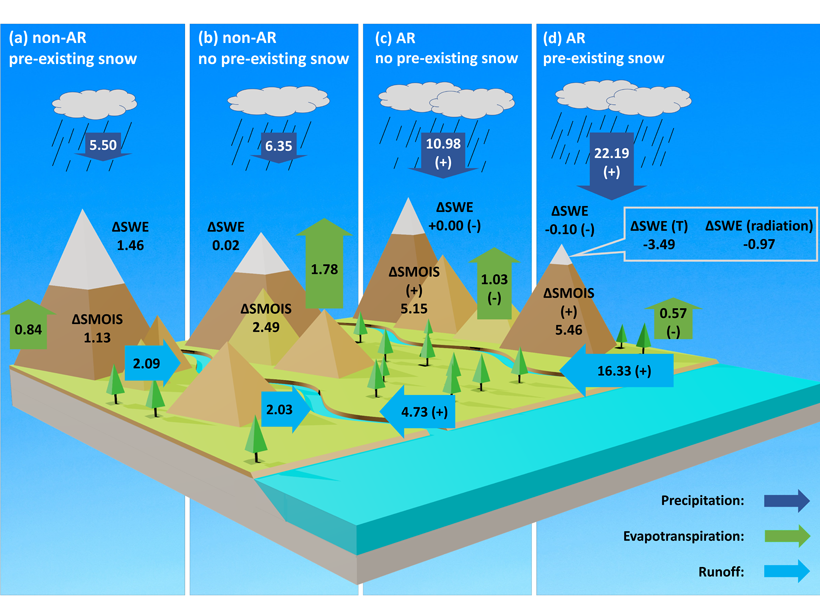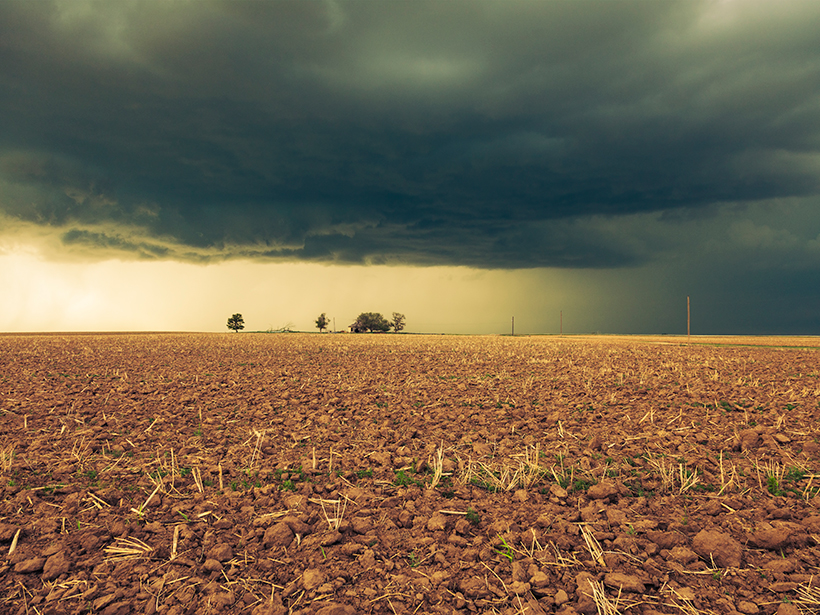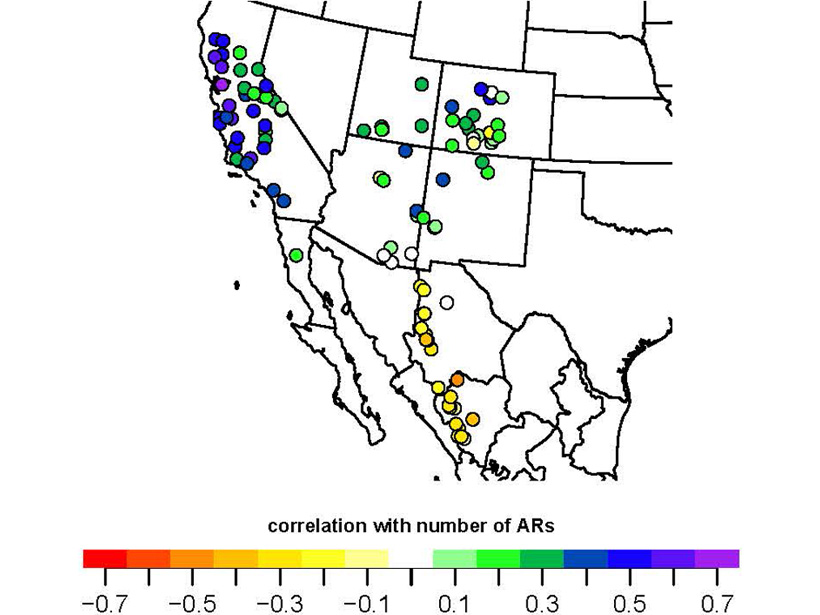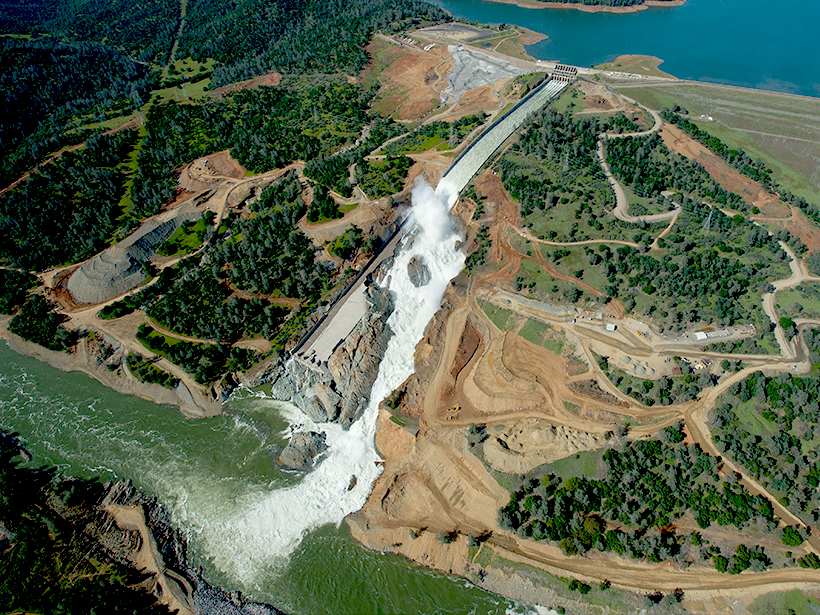Results from the Atmospheric River Tracking Method Intercomparison Project (ARTMIP) describe the similarity and difference of using eleven detection algorithms and three reanalysis products.
atmospheric rivers
A New Clue to Antarctic Ice Shelf Collapse
A particular kind of storm coincided with 13 of the 21 recent calving events in Antarctica.
Atmospheric Rivers Spur High-Tide Floods on U.S. West Coast
Researchers analyzed 36 years of data to understand how atmospheric rivers and other factors drive chronic coastal flooding.
Teaching Machines to Detect Climate Extremes
Artificial intelligence can be used to analyze massive amounts of data from climate simulations, but more training data are needed.
Atmospheric Rivers Have Different “Flavors”
New research is helping scientists understand why moisture-laden atmospheric rivers of similar intensities have different effects on land.
Atmospheric Rivers Trigger Heavy Snowmelt in Western USA
A rare atmospheric phenomenon that transports large quantities of water vapor into the coastal watersheds of the western USA is responsible for up to 10–20% of intense snowmelt events in the region.
Hydrological Footprint of Atmospheric Rivers on Land
Atmospheric rivers that make landfall in the western United States have significant impacts on the surface water balance, sharpening the seasonality of water resources in coastal watersheds.
Bridging the Weather-to-Climate Prediction Gap
A task force of researchers set out to bridge the gap between the 2-week weather forecast and long-term climate predictions; their findings could help in forecasting the likelihood of extreme events.
500 Years of Atmospheric River Landfalls in Southwestern USA
A network of tree-ring chronologies has been used to develop the first reconstruction of atmospheric river landfalls on the US Pacific Coast over the last 500 years.
California Floods Linked to Atmospheric Water Vapor “Rivers”
Narrow atmospheric streams of water vapor that deliver heavy rains are more commonly associated with floods and debris flows in northern California than with flash floods in southern California.

